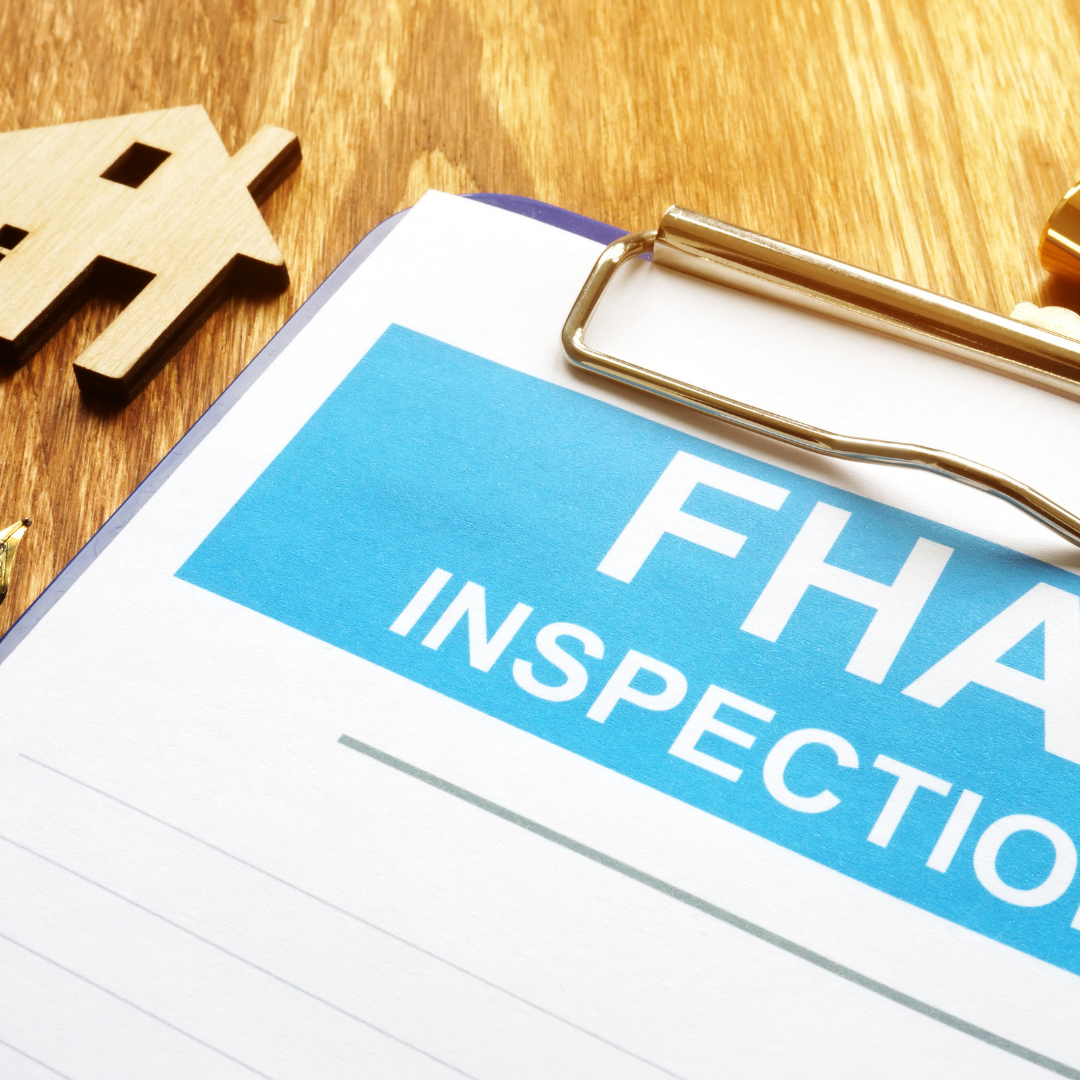
Property Taxes Just Went Up? We’ve Got You Covered!
It’s reassessment season for most folks in our area. Homeowners

Right now on our Appraisal Blog, we’re all about helping Loan Officers. This post is part six of a 12-part series we’re calling The Loan Officer’s Guide to Appraisals. We’re halfway there! So far in our series, we’ve looked at final inspections, lending on unique homes, communication with the appraiser, reconsiderations of value and bracketing. So if this is your first time reading our blog, welcome! And, you’ll definitely want to take a few minutes and read through our previous posts to get caught up.
In this blog post, we discuss the topic of FHA appraisals, and the few ways in which they differ from an appraisal completed for conventional loan purposes. We cover the basics, giving you all the tools you need to understand this type of appraisal, and we’ve also included a handy cheat-sheet you can give to your clients that lists many of the items an appraiser will look for during an FHA appraisal inspection.
Conventional and FHA: What’s the Difference?
If you’re a loan officer, you likely already know this, but for those who might be new to the business, or homeowners reading this blog, let’s look at a few of the differences between conventional and FHA loans. Let me make one important disclaimer: I am not a loan officer! So if you have any specific questions, it’s best to contact your local mortgage professional.
Generally speaking, conventional loans don’t require PMI (private mortgage insurance) as long as you’re able to put down at least 20%. Conventional loans are good for those higher loan amounts, whereas FHA has loan limits, depending on the county (right now, those limits are between $350,000 – $825,000 rounded). And, although there are some exceptions to this rule, a conventional loan is usually processed faster than an FHA loan. When I talk to homeowners about the time frame for getting an appraisal completed, I always inform them that when working with the federal government, sometimes it does take a little longer to get through all the channels and back to the loan officer’s desk. This isn’t necessarily a bad thing – it’s just part of the process.
While conventional loans aren’t guaranteed or insured by the federal government, FHA loans are insured by the Federal Housing Administration (FHA). This provides some protection for the lender, in the event that the homeowner defaults on their loan. Typically, these loans are good for first-time home buyers, or buyers without a ton of cash for a down payment, and/or less than perfect credit.
Typically, FHA loans have lower down payment requirements than conventional loans. Although you can get in a home for close to nothing down with a variety of loans, most conventional loans will require more than the 3.5% down payment required of FHA. FHA loans also have lower credit score requirements, and the debt-to-income ratio is a little bit easier to come by for most buyers.
So What About the Appraisal Process?
Now that you’ve gotten a primer on the difference between these two loans, let’s finish our discussion with how the two loans differ from the appraiser’s perspective.
The overall process of appraising doesn’t change with the loan type. As an appraiser, I’m going to inspect the subject property, take photos and measurements, retrieve all the pertinent legal information about the home, and so on. Then, I’m going to search for comparable sales that are similar to the subject, and complete the sales comparison approach to value, along with up to two other approaches (income and cost) as necessary, ultimately leading to a reconciled opinion of value. Where the few differences lie are in the scope of inspection and also in what and how we report.
Inspection Differences
During the appraisal inspection, as I wrote above, I’ll be measuring the home and taking photographs of the home’s exterior and interior. As with a conventional loan appraisal, I’ll also be photographing anything that affects the home’s market value. Maybe that’s an external influence like a railroad directly behind the property. Or perhaps I observe a deficiency that will need to be addressed such as a bathroom that’s not functioning properly. FHA appraisals go a little deeper. While we’re definitely not completing a full home inspection, I like to compare what we do to a watered down home inspection. A good home inspector will go through the home with a fine-toothed comb, and spend hours looking at every little detail of the home. An appraiser – when completing an FHA appraisal inspection – is concerned with the ‘big picture’. Is the house safe, sound and secure? FHA wants to make sure the major systems are functioning properly, and that the home is suitable for habitation, because after all, they’re insuring the loan, remember? At the end of this blog, I’ve included a list of many of the items appraisers look for during an FHA appraisal inspection.
Reporting Differences
For any appraisal, there must be adequate reporting of the subject property, comparable sales, approaches to value, and reconciliation of value – just to name a few elements. For FHA appraisals, there needs to be a few items in addition to all of these.
Minimum Property Requirements (MPRs) refer to general requirements that all homes insured by FHA be safe, sound, and secure.
Minimum Property Standards (MPSs) refer to regulatory requirements relating to the safety, soundness, and security of New Construction.
And, if the home does not meet these standards as set forth in HUD Handbook 4000.1 (current handbook as of this article – see the link below), then the appraiser should list the various deficiencies, and also include a cost to cure (how much it should cost to correct the deficiencies).
A Quick Word on Final Inspections
If you haven’t read our full blog on final inspections, definitely take a few minutes and read it *here*. Other than new construction, FHA appraisals are the most common type of appraisals that require final inspections. Maybe the home was built prior to 1978 and had peeling/chipping paint, or perhaps the utilities were disconnected, or the water heater was missing a TPR valve discharge pipe. Whatever the deficiency, the repairs will need to be made and a re-inspection will be required. One of the most common requests we receive from loan officers and Realtors is “Hey, my homeowner just finished the repairs. Can we just email or text you the photos so you don’t have to come back out?”. Believe me, if this were acceptable, a lot of appraisers would be super excited. In fact, some appraisers do this already, although as I’ll show – they’re basically committing fraud.
You see, most final inspections are placed on the 1004D form. On that form, it says,
“I certify that I have performed a visual inspection of the subject property to determine if the conditions or requirements stated in the original appraisal have been satisfied” (emphasis mine). So it’s not that I want to come back to the property and make a quick 100 bucks. In fact, most of the time, I lose money on final inspections. What it comes down to is simply, I have signed my name to this report, certifying that I personally have inspected the home and it meets the conditions and requirements of the original appraisal.
That wasn’t too bad, was it? The differences between appraisals for FHA and conventional financing really aren’t that many. Just keep in mind these reporting differences, which will result from a slightly more detailed inspection, and you’ll be all set! But that’s not all. We’ve created a handy cheat-sheet for you to know what the appraiser will be looking for during an FHA inspection. Keep one for yourself, and print off copies or keep a digital copy to forward to your homeowner clients so they’ll be well-prepared for the appraiser. Just remember that this list isn’t exhaustive, but does cover the most common FHA issues.
PS – if you click *here*, you’ll be able to access the entire HUD 4000.1 Handbook. It’s a searchable online document that you can access anytime, or just download to your desktop for future reference.
FHA Appraisal Inspection Cheat Sheet
All utilities must be on.
Toilets, a sampling of faucets, hot & cold water will all be tested.
The water heater will be inspected and must have a pressure relief valve and piping.
The yard should be adequately sloped away from the foundation.
The heating system and central cooling system (if applicable) will be tested.
The electrical systems will be observed and analyzed, including a sampling of switches, lights, and outlets (exposed or frayed wires will need to be covered).
The roof will be observed, from the ground.
The crawl space will be observed (if applicable); make sure it’s accessible.
If there are any systems in the crawl space, there must be at least 18” of clearance from the floor joists to the ground.
The attic will be observed (if applicable); make sure it’s accessible.
Environmental hazards/contaminants, or excessive odors may be noted.
Minor cosmetic issues (worn carpet, need for paint, updates, etc) are acceptable but will be reported.
Homes built prior to 1978 must be free of peeling and/or chipping paint. This includes any surface on any structure found on the property. The defective surfaces should be scraped, re-painted, and the paint chips removed from the ground.
ALL rooms and buildings (interior and exterior) will be observed and photographed.
Committed to helping you understand your home’s market value,
Ryan Bays, SRA, AI-RRS

It’s reassessment season for most folks in our area. Homeowners

I feel like we all need a laugh. How about

So this may be a slight break from the norm,
Riverfront Appraisals has been providing comprehensive valuations of residential properties to Western Kentucky and Southwestern Indiana since 2008.